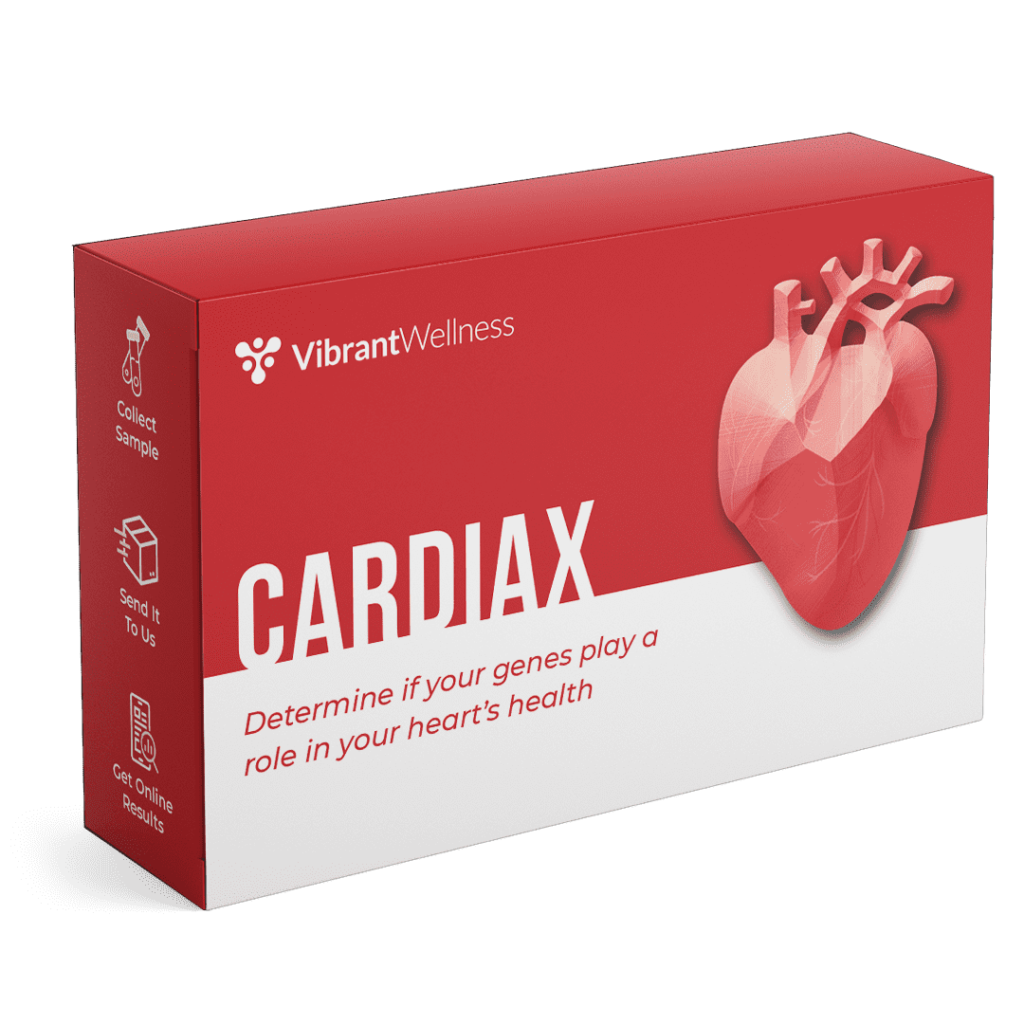

In a world increasingly dominated by technology, one where the line between health care and our day-to-day lives blurs more each day, our tale unfolds.
“Listen,” Mandy said with a sigh, slumped down at the local café, cradling a half-empty mug of lukewarm coffee. Her face was pale, her eyes wide with worry. “I just can’t shake off this anxiety, you know?”
Her best friend, Isabelle, regarded her with deep concern. “Is it work?” she asked. “Family? Or… is it your health, Mandy?”
Mandy gave a reluctant nod, stirring her coffee absently. “I think it’s my blood pressure,” she admitted. “I’ve been getting headaches, dizziness… you know how my mom had issues with hypertension. I just don’t know what to do, Izzy.”
Isabelle was quiet for a moment, thoughtful. “Why don’t you try monitoring it at home? You don’t have to wait for doctor’s appointments. Take control of your own health, Mandy.”
“But how?” Mandy’s voice wavered with uncertainty.
Isabelle smiled, pulling out her smartphone and tapping away. “Here,” she said, turning the screen to show Mandy a blog post. “I think this will help you. It’s all about the benefits of using a wrist blood pressure monitor.”
Mandy took the phone, her eyes scanning the introductory paragraphs. “But isn’t it complicated to use? And I heard these devices aren’t as accurate as the arm ones…”
“That’s a common myth,” Isabelle responded. “Actually, if used correctly, wrist blood pressure monitors can be just as accurate. And they’re compact, portable, and extremely user-friendly. Perfect for someone like you, who’s always on the go.”
Mandy looked back at the blog post, her expression softening. “Well, it’s worth a try,” she conceded, handing the phone back to Isabelle.
From this day forward, Mandy started a journey of self-care, using a wrist blood pressure monitor to track her health. She learned to take control, to demystify her health issues, and most importantly, to fight back her anxieties with knowledge and self-empowerment.
If you, too, are concerned about your blood pressure, or simply want to stay on top of your health, consider a wrist blood pressure monitor. Read on to discover why it makes sense to use this powerful tool in your daily life…
Wrist Blood Pressure Monitors have become an increasingly popular choice for individuals looking to take control of their health. These compact devices offer a convenient and comfortable way to monitor blood pressure at home, making them particularly appealing for busy professionals or those with chronic conditions.
We will explore the numerous benefits of wrist blood pressure monitors, such as improved comfort during measurements and accurate readings comparable to arm cuff devices. We will also delve into how these monitors work, thanks to advanced sensors and a user-friendly design.
Furthermore, you’ll learn about choosing the right wrist blood pressure monitor based on accuracy standards set by professional organizations and additional features like Bluetooth connectivity. The importance of consistent self-monitoring in maintaining heart health will be discussed along with tips on identifying trends or fluctuations in data that can be shared with healthcare providers.
Last but not least, we’ll examine practices that improve heart health including nutrient-rich diets and exercise routines tailored specifically for promoting healthy blood pressure levels. Finally, we’ll touch upon understanding the role genetics play in our cardiovascular well-being and how personalized approaches based on genetic information can lead us towards better overall heart health.
Whew, that’s a mouthful, but you’ll see how this all ties in together…

Minimize Medications. Maximize Health.
Are you super busy but need to take control of your health? Are you tired of being tired? Subscribe to my “Minimize Medications, Maximize Health Blog” and I’ll give you 7 Tips to Get Healthy in No Time absolutely FREE.
You have Successfully Subscribed!
The Benefits of Wrist Blood Pressure Monitors
Wrist blood pressure monitors offer several advantages over traditional arm cuffs, such as increased comfort and convenience. They are easy to use, portable, and provide accurate readings without the discomfort often associated with arm cuffs. These features make wrist monitors an excellent choice for monitoring your heart health.
Improved Comfort During Measurements
No more awkwardly wrapping a bulky cuff around your upper arm. With wrist blood pressure monitors, you can easily slip on the compact device like a watch. This design allows for greater comfort during measurements, making it less likely that you’ll avoid taking those crucial readings due to discomfort.
Convenience in Daily Usage
Beyond their comfortable fit, wrist blood pressure monitors also excel in terms of convenience. Their small size makes them highly portable – perfect for busy professionals who need to monitor their blood pressure on-the-go or while traveling. Plus, many models feature digital screens that display clear and easy-to-read results so you can quickly check your numbers without hassle.
- Digital screen: Easy-to-read results at a glance.
- Portability: Compact design fits into bags or purses with ease.
- User-friendly interface: Simple operation even for first-time users.
Accurate Readings Comparable to Arm Cuff Devices
You might be wondering: Are wrist blood pressure monitors accurate? While some older models may have had issues with accuracy compared to upper-arm devices recommended by organizations like the American Heart Association, modern wrist monitors have come a long way. Today’s devices use advanced sensors and technology to provide readings that are just as reliable as those from traditional arm cuffs, provided you follow the proper guidelines for positioning your wrist at heart level during measurements.
By incorporating a wrist blood pressure monitor into your daily routine, you can take charge of your cardiovascular health with ease and confidence. So go ahead – make the switch to this convenient device and start enjoying its benefits today.
Wrist blood pressure monitors offer the convenience of daily use and improved comfort during measurements, while providing accurate readings comparable to arm cuff devices. By utilizing advanced sensors for precise measurement in a compact design, wrist blood pressure monitors are an ideal choice for busy professionals looking to take control of their health.
Key Thought:
Wrist blood pressure monitors are a convenient and comfortable way to monitor heart health. They offer easy-to-read results, portability, and accurate readings comparable to traditional arm cuffs. By incorporating this device into your daily routine, you can take charge of your cardiovascular health with ease and confidence.
Choosing the Right Wrist Blood Pressure Monitor
If you’re on the hunt for a wrist blood pressure monitor, it’s essential to consider factors such as accuracy, ease of use, and additional features that can help you better manage your cardiovascular health. With so many options available in today’s market, how do you know which one is right for you? Fear not. We’ve got some tips to guide you through this decision-making process.
Accuracy Standards Set by Professional Organizations
The American Heart Association (AHA) recommends using an at-home blood pressure monitor that has been validated by professional organizations like the AHA or European Society of Hypertension. This ensures that your device provides accurate readings comparable to those taken in a medical setting. Look for devices with a seal of approval from these organizations when making your selection.
User-friendly Interface and Instructions
A good wrist blood pressure monitor should be easy to use even if technology isn’t exactly your forte. The digital screen should display clear instructions and provide simple navigation buttons or touchscreens to make taking measurements a breeze. Additionally, look for monitors with adjustable cuffs designed specifically for wrists – this will ensure proper fit and comfort during each reading.
Additional Features Like Bluetooth Connectivity
- Digital Memory: Some models come equipped with built-in memory storage allowing users to track their previous readings over time without needing pen and paper handy.
- Multiple Users: If more than one person in your household needs regular monitoring, opt for a device capable of storing data separately per user – no mix-ups here.
- Smartphone Compatibility: For those who love their gadgets, some wrist blood pressure monitors can sync with smartphone apps via Bluetooth. Some wrist blood pressure monitors have the capability to connect with your smartphone or tablet via Bluetooth, enabling you to monitor and analyze trends over time.
In addition to these features, consider the overall design of the monitor – after all, it’s something you’ll be using regularly. For those on the move, a lightweight and stylish monitor is ideal for taking with you wherever you go.
To help kickstart your search for the perfect wrist blood pressure monitor, check out this list of top-rated devices. Remember that investing in a reliable device is an investment in better heart health.
Choosing the right wrist blood pressure monitor is essential for accurate readings and to ensure that you are monitoring your heart health effectively. It’s imperative to be aware of the characteristics present on different models in order to make a wise decision when selecting a wrist blood pressure monitor.
Key Thought:
When choosing a wrist blood pressure monitor, accuracy and ease of use are important factors to consider. Look for devices that have been validated by professional organizations like the American Heart Association or European Society of Hypertension, as well as adjustable cuffs designed specifically for wrists. Additional features such as digital memory, multiple user capability, and Bluetooth connectivity can also be helpful in managing cardiovascular health.
Monitoring Your Heart Health at Home
Gaining insight into your cardiovascular health is key to sustaining it. Regularly measuring your blood pressure with an at-home blood pressure monitor, such as a wrist monitor, can be crucial in detecting potential issues early on and ensuring you’re staying on top of your cardiovascular health.
Importance of Consistent Self-Monitoring
Routinely checking your blood pressure helps you stay informed about any fluctuations or trends that may require attention from healthcare professionals. The American Heart Association recommends monitoring at least once per day for those with high blood pressure or other risk factors. By keeping track of these readings over time, you’ll have valuable data to share with your doctor during appointments and better understand how lifestyle changes are impacting your heart health.
Identifying Trends or Fluctuations in Data
An accurate home blood pressure monitor, like a wrist monitor, allows you to observe patterns in real-time so that you can promptly consult with healthcare professionals if necessary. It’s essential to recognize the difference between occasional spikes due to stress or caffeine intake versus consistently elevated levels indicative of hypertension (high blood pressure). Understanding these nuances will empower you to make informed decisions regarding medical interventions or lifestyle adjustments.
Sharing Results With Healthcare Providers
Your at-home measurements play a vital role in helping doctors assess the effectiveness of treatments and medications prescribed for managing high blood pressure. Wrist monitors often come with digital screens that store multiple readings, making it easy to share this data with your healthcare team. Some wrist blood pressure monitors even offer Bluetooth connectivity for seamless integration with smartphone apps or other digital tools, allowing you and your doctor to track progress more efficiently.
Regularly monitoring your blood pressure is an easy way to manage your heart health. With the convenience and accuracy offered by wrist blood pressure monitors, there’s no excuse not to stay informed about this critical aspect of cardiovascular well-being. So go ahead, strap on that sleek little device like it’s the latest fashion accessory (because let’s face it – being healthy never goes out of style), and start taking charge of your heart health today.
Monitoring your heart health at home is an important step in maintaining a healthy lifestyle and can help identify potential problems early. Regularly exercising, consuming nourishing foods, getting adequate rest, and handling stress can all aid in taking charge of your cardiovascular wellbeing.
Key Thought:
Regularly monitoring your blood pressure with a wrist monitor is crucial in detecting potential issues early on and ensuring you’re staying on top of your cardiovascular health. By keeping track of these readings over time, you’ll have valuable data to share with your doctor during appointments and better understand how lifestyle changes are impacting your heart health. Understanding the difference between occasional spikes versus consistently elevated levels will empower you to make informed decisions regarding medical interventions or lifestyle adjustments.
Practices That Improve Heart Health
Building a strong foundation for healthy heart function goes beyond just monitoring; adopting specific lifestyle practices can significantly improve overall cardiovascular well-being. Consider focusing on a balanced diet, regular exercise, proper sleep patterns, and stress management to support your heart health.
Nutrient-rich diets for cardiovascular benefits
Fueling your body with nutrient-rich foods is essential in maintaining good heart health. Incorporate plenty of fruits, vegetables, whole grains, lean proteins like fish or poultry and healthy fats such as nuts and olive oil into your daily meals. Limiting processed foods high in sodium or added sugars will also help keep blood pressure levels stable.
Exercise routines that promote healthy blood pressure levels
Regular physical activity, such as brisk walking or swimming for at least 150 minutes per week (or about 30 minutes most days), can lower high blood pressure while strengthening the heart muscle. Exercise helps maintain a healthy weight and reduces stress – both crucial factors in managing hypertension effectively.
The impact of quality sleep and intermittent fasting on heart health:
- Sleep: Adequate restorative sleep is vital to keeping our hearts functioning optimally. Aim for a duration of slumber that is between seven to nine hours in length, so the body can be provided with sufficient time for it to restore itself. Poor sleep habits have been linked with an increased risk of high blood pressure and other cardiovascular issues.
- Intermittent fasting: This eating pattern, which involves cycling between periods of regular food intake and fasting, has been shown to improve heart health by reducing inflammation, promoting weight loss, and regulating blood sugar levels. Research suggests that intermittent fasting may help lower the risk of heart disease.
Stress reduction techniques for better heart function
Chronic stress can take a toll on your ticker. Learning how to manage stress effectively is essential in maintaining good cardiovascular health. Try incorporating relaxation techniques such as deep breathing exercises or meditation into your daily routine – even just a few minutes per day can make a difference. Additionally, engaging in hobbies you enjoy or spending time with loved ones can also provide much-needed relief from everyday pressures.
Taking charge of your heart health with the CardiaX test:
The CardiaX test, an innovative genetic testing tool designed specifically for assessing individual risks related to cardiovascular diseases, and helps you understand potential predispositions based on genetics. With the CardiaX test, you can make decisions about lifestyle changes or medical interventions that are tailored to your individual needs.
Practices such as nutrient-rich diets, exercise routines, quality sleep and intermittent fasting can all help improve heart health. Comprehending the hereditary elements of cardiovascular ailments is key for making educated choices about your well-being.
Key Thought:
To improve heart health, it’s important to adopt specific lifestyle practices such as a balanced diet, regular exercise, proper sleep patterns and stress management. Nutrient-rich diets including fruits, vegetables, whole grains and lean proteins can help maintain good heart health while intermittent fasting has been shown to reduce inflammation and promote weight loss.
Understanding the Role of Genetics in Heart Health
Your genes can play a significant role in determining your individual risks related to cardiovascular disease. By learning more about how genetics may affect you personally, you can take charge of your heart health by making informed decisions about lifestyle changes or medical interventions.
Common Genetic Risk Factors for Cardiovascular Diseases
Several genetic factors are known to contribute to an increased risk of developing high blood pressure, heart disease, and other cardiovascular conditions. Some common examples include:
- Apolipoprotein E (APOE) gene: Variations in this gene have been linked with higher cholesterol levels and an increased risk of coronary artery disease.
- MTHFR gene: Mutations in this gene can lead to elevated homocysteine levels, which is associated with a higher risk for stroke and heart attack.
- NOS3 gene: Certain variants within this gene have been connected with endothelial dysfunction – a condition that affects blood vessel function and contributes to the development of various cardiovascular diseases.
How Genetic Testing Like CardiaX Test Helps Assess Risks
To better understand your personal genetic predisposition towards certain cardiovascular issues, consider undergoing specialized testing like the CardiaX test. This comprehensive analysis examines over 100 different genetic markers associated with heart health, providing valuable insights into potential risks as well as personalized recommendations for preventive measures based on your unique DNA profile.
Personalized Approaches Based on Genetic Information
Armed with the knowledge of your genetic risk factors, you can take a proactive approach to managing your heart health. Some strategies that may be particularly beneficial for individuals with specific genetic predispositions include:
- Dietary modifications: If you have an APOE gene variant associated with high cholesterol levels, adopting a heart-healthy diet rich in fruits, vegetables, whole grains and lean proteins could help keep your lipid profile in check.
- Vitamin supplementation: For those with MTHFR mutations leading to elevated homocysteine levels, supplementing with B vitamins (particularly folic acid) may help lower this cardiovascular risk factor.
- Lifestyle changes: Regular exercise and stress reduction techniques like yoga or meditation can improve endothelial function – which is especially important if you carry NOS3 gene variants linked to endothelial dysfunction.
In addition to these targeted interventions based on genetics, it’s essential not to overlook the importance of general lifestyle practices that promote good heart health for everyone. Consistently monitoring blood pressure using devices like wrist blood pressure monitors that provide accurate readings is crucial in maintaining overall cardiovascular well-being. By combining personalized approaches informed by genetics, alongside broader healthy habits such as proper nutrition and regular physical activity, you’ll be well-equipped to safeguard your heart against potential risks.
Key Thought:
Understanding the role of genetics in heart health is crucial for making informed decisions about lifestyle changes or medical interventions. Genetic testing like CardiaX can help assess risks and provide personalized approaches based on genetic information, alongside broader healthy habits such as proper nutrition and regular physical activity to safeguard your heart against potential risks.
If you would like to receive a free resource sheet to support your quest for better heart health, click the button below to receive your gift.
I’m excited to talk about this topic today because not only do I truly believe that you have the power to reverse heart disease and lower high blood pressure to improve your health, but the science also agrees! You can adopt healthy lifestyle practices that improve your health and enrich your life, which can in turn improve the lives of those close to you. You have the power to break the cycle of these chronic diseases so that you can leave a legacy of health to your loved ones.
As you may already know, I use lifestyle medicine as the first line of treatment, before medications, to treat lifestyle-related chronic diseases. Lifestyle-related chronic diseases include diabetes, hypertension, obesity, and some cancers, just to name a few. Lifestyle practices, such as eating a whole-food plant-based diet and regular physical activity, can help you improve blood pressure and reverse heart disease. In certain cases, these approaches may even outperform pharmaceutical therapy.
But I always tell my patients that conventional medications may be appropriate at this time to prevent catastrophic illness, but over time, you can work to make the necessary lifestyle changes to possibly reduce and/or eliminate medications. Please remember to always consult your physician for your particular needs and circumstances prior to making any decisions whatsoever.
Is Dietary Supplementation Right For You?
There is a common saying, “You can’t outrun a bad diet.” This is especially true when it comes to heart health. Diet is sooooo very important… Did you know that your diet could be the key to a healthy heart? It’s true – what you eat (and don’t eat) can have a big impact on your cardiovascular health. So, if you’re looking to keep your heart in tip-top shape, make sure you pay attention to what you put on your plate.
Unfortunately, it can be difficult to eat a healthy diet in this day and age. It is very important to note that we are not eating the same foods we ate years ago because the soils have been depleted of critical nutrients through current industrial farming practices. And because the soil is not as good as it used to be, the food supply (grown from the depleted soil) is not as good as it used to be. For example, you are not getting the same levels of magnesium as you would have gotten 30 or even 50 years ago.
Second, much of the food has been genetically altered, which can impact the inherent and unique nutritional composition that each food possess. For example, ancient einkorn wheat has less gluten, more protein, more Vitamin A, and more beta carotene, than modern genetically modified wheat.
Third, the toxic load in the environment today is much higher than 100 years ago. We can see this with global warming, toxic landfills, polluted oceans and waterways, etc. Toxicity levels interfere with nutrient assimilation and absorption not just into the foods, but into our bodies as well.
For some people, vitamin and mineral supplements offer important health benefits. Supplements are designed to fight deficiencies found in our diet and complement the food we eat regularly. Supplements are basically “helping hands” to our daily food.
If you need extra help in getting the nutrients you need, and/or are unable to eat better, the supplements in my Healthy Heart Bundle may provide the extra boost you need.
These are my favorite Heart Health Supplements to use! This Healthy Heart Bundle will ensure you have the intake of the important vitamins, minerals, and probiotics to decrease inflammation and boost your innate wellness day and night. Taken together, it’s a solid plan for increasing your body’s natural resiliency while you lose weight and improve your heart health, naturally.
For best results make sure you use my heart health supplements with dietary changes including a whole food plant-based diet, regular exercise (at least 2-3x per week), regular sleep (8 hours per night), and intermittent fasting (at least 1-3x per week).
Tools to Improve Heart Health
Blood Pressure Monitoring
It’s very important to monitor your blood pressure. I often recommend an automatic upper arm blood pressure cuff, but a wrist blood pressure monitor is also acceptable.
Weight Monitoring
Since weight management is very important in blood pressure control, I recommend that you be mindful of your weight and its fluctuations, and that you monitor your weight AT LEAST on a weekly basis. I recommend a scale that includes a body composition monitor.
Wrist Blood Pressure Monitor FAQs
Wrist blood pressure monitors can be accurate if used correctly. They have been shown to provide readings comparable to arm cuff devices when positioned at heart level and with proper technique. However, they may be more sensitive to body position and movement, so it’s essential to follow the manufacturer’s instructions for optimal accuracy. Studies support their reliability in clinical settings.
Pros:
- Improved comfort during measurements
- Ease of use and convenience
- Compact design for portability
- Potential advanced features like Bluetooth connectivity
Cons:
- Sensitivity to body position and movement affecting accuracy
- Possible higher cost compared to traditional arm cuffs
- Limited cuff size options for larger wrists
Final Thoughts
Wrist blood pressure monitors offer improved comfort and convenience while providing accurate readings comparable to traditional arm cuff devices. When choosing a monitor, it’s important to consider accuracy standards set by professional organizations and additional features like Bluetooth connectivity. Consistent self-monitoring is crucial for identifying trends or fluctuations in data and sharing results with healthcare providers.
Practices that improve heart health include nutrient-rich diets, exercise routines, quality sleep, intermittent fasting, and stress reduction techniques. Realizing the influence of genetics on cardiac conditions may provide personalized strategies based on hereditary data.
If you’re interested in learning more about how wrist blood pressure monitors can help you take control of your heart health, visit DrNicolleMD.com for expert advice and guidance.
Dr. Nicolle Martin
Some of the links in this article are "affiliate links", a link with a special tracking code. This means if you click on an affiliate link and purchase the item, we will receive an affiliate commission.
The price of the item is the same whether it is an affiliate link or not. Regardless, we only recommend products or services we believe will add value to our readers.
By using the affiliate links, you are helping support our Website, and we genuinely appreciate your support.
Last updated on June 4th, 2023 at 04:35 pm

Minimize Medications. Maximize Health.
Are you super busy but need to take control of your health? Are you tired of being tired? Subscribe to my “Minimize Medications, Maximize Health Blog” and I’ll give you 7 Tips to Get Healthy in No Time absolutely FREE.









